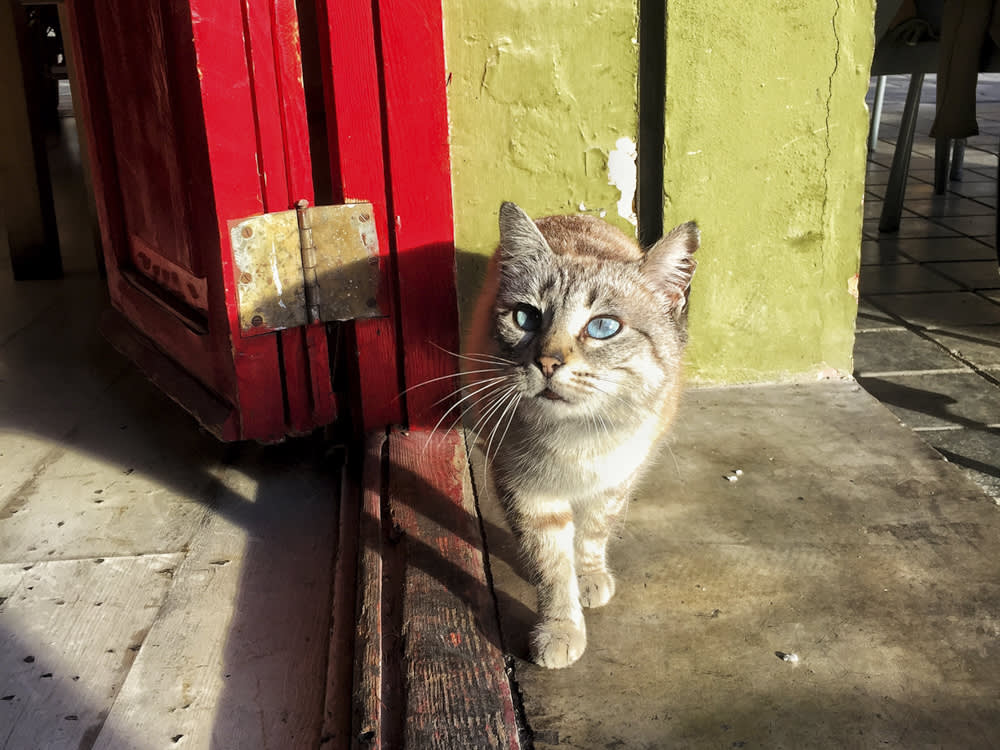How TNR Is Helping Outdoor Cats
Trap-Neuter-Return is the most humane way to keep stray cat populations in check. Here’s how it works.
There are an estimated 30-40 million free-roaming cats in the United States, although approximating the number is like guessing how many marbles are in a giant jar. What we do know is that three-four million of them end up in animal shelters, especially during “kitten season” in the spring, but only a fraction of them are adopted. It’s simply not possible to rescue them all — and not all need to be rescued. That’s where TNR comes in.
TNR stands for Trap-Neuter-Return and involves safely trapping, spaying or neutering, and returning feral cats to their colonies. Considering a cat can have up to five litters a year — and up to 12 kittens each time — this is the most humane way to keep stray cat populations in check. As tempting as felines as far as the eye can see is, here’s how and why TNR is vital work.
Save on the litter with color-changing tech that helps you better care for your cat.
What is TNR?
T: Trap
Trapping is the process of humanely capturing cats and kittens who live outdoors so they can be transported safely to a veterinary clinic for a spay or neuter surgery, vaccinations, and an examination for any medical concerns. While some community cats can be picked up and placed in a carrier, most are afraid or wary of people, and the safest way to catch them is to trap them.
It’s important to choose the right trap so a cat isn’t harmed in the process. For starters, only use “live” traps that capture animals alive. Trapping is an art, but essentially, a trapper will set up traps in an area where community cats live, place cat food near the back of the trap, set the door open, and then wait for a cat to walk in where they’ll step on a piece that automatically shuts the door behind them. You can reduce stress for the cat by placing a towel over the trap when you’re setting it up so they can’t see you approaching once caught.
How much do you spend on your pet per year?
There are super helpful videos on how to successfully trap cats online, as well as classes taught by local TNR pros. Your local animal shelter may be able to loan you a trap or you can become a volunteer for your neighborhood TNR program.
N: Neuter
Spaying and neutering community cats is critical to reducing their population over time — a goal of animal welfare advocates and conservation organizations alike. Community cats are also a major driver of kittens who enter shelters and rescues. Captured kittens who are over two pounds can be spayed or neutered, and a veterinarian will determine if they are healthy enough for surgery.
While the cat is under anesthesia, the veterinarian will perform a thorough exam, checking for any injuries that may need treatment before a cat is released. They will also vaccinate the cat to protect against feline viruses and rabies. Some TNR programs will include a “V” in the acronym (TNVR) to emphasize the vaccinations and remind the community about the public health benefits of TNR. Lastly, a small portion of a cat’s left ear will be trimmed while they’re under anesthesia so that it’s visually clear the cat has been spayed or neutered and they don’t end up being trapped again unnecessarily.
R: Return
Returning — or releasing — is perhaps the step that invites the most questions. Why return a cat to the outdoors? Why not bring them to the local animal shelter to be put up for adoption? First, remember that many community cats have loving caretakers who own or co-own the animals for whom they care. Any TNR program should include a hefty dose of neighborhood outreach to ensure that cats — even friendly cats — are not stolen from their families and that caretakers are part of the effort to trap cats for spay/neuter. They’ll also be the ones to monitor the cats over time to watch for any medical concerns as the cats age.
Second, TNR is the most effective and most humane method of reducing outdoor cat populations over time. Removing cats and placing them at the local shelter — or worse, euthanizing them — won’t solve the problem. New cats will simply move into that space and reproduce. Because cats are territorial, targeted TNR in which 75% or more of the cats in an area are spayed or neutered leads to a drastic reduction in cats over time. There are exciting efforts underwayopens in new tab to accurately count the number of cats so we can measure the impact of TNR programs.
Third, many community cats were born outside and will not adjust to life as an indoor house cat. Their time in a shelter environment or a future home can be extremely stressful, causing them to become sick from a weakened immune system, and highly increasing their risk for euthanasia. In situations where a feral cat is trapped with her young kittens, a decision may be made to keep mom in a home environment while she nurses the kittens, but every effort should be made to return her to her neighborhood once the kittens are weaned. Kittens under the age of 12 weeks may be able to adjust to life in a home, and time in a foster home can help socialize them to humans.
How You Can Help
TNR is an art backed by science, and one that brings us ever closer to a day where there are far fewer community cats living outdoors — a goal we can all agree benefits shelters, caretakers, wildlife, and the cats themselves. Google or ask your local shelter if they have a TNR program. You can help by volunteering to set traps, transport cats to and from the clinic for surgery, foster young kittens, or donate to your local TNR program. Below, a few TNR-focused nonprofit organizations to follow and support:
Alley Cat Alliesopens in new tab
@alleycatalliesopens in new tab
Stray Cat Allianceopens in new tab
@straycatallianceopens in new tab







